The radical refurbishment of an Australian farmhouse into a family retreat
The Seat is a spectacular house by Atlas Architects, born from the bones of a 1980s-era structure and re-shaped to take in the impressive landscape of Melbourne’s Mornington Peninsula
Tess Kelly - Photography

Atlas Architects describes its new project, The Seat, as being ‘not just affected by the global pandemic but born of it’. Set in a remote coastal spot in Victoria, the new house had a rapid genesis. The site was snapped up by clients as a weekend retreat, but after being confined to their new property during the pandemic, they realised the coastal plot could do with a radical overhaul of its existing Australian farmhouse structure.

A deadline was imposed – a family wedding in March 2022 – and Atlas was engaged to create a new family home, after working with the Melbourne-based clients on a number of other projects.

At its heart, The Seat is a major overhaul of the original structure, a brick-built, pitched-roof farmhouse dating back to the 1980s. Despite its bucolic location amongst the hills of the Mornington Peninsula, the house was orientated away from the views.
‘Our clients wanted to insert a new dimension that embraced, celebrated and centred the view so that no matter where you are in the house, you are connected to nature,’ say the architects, adding that the refurbishment also needed space for children and grandchildren.
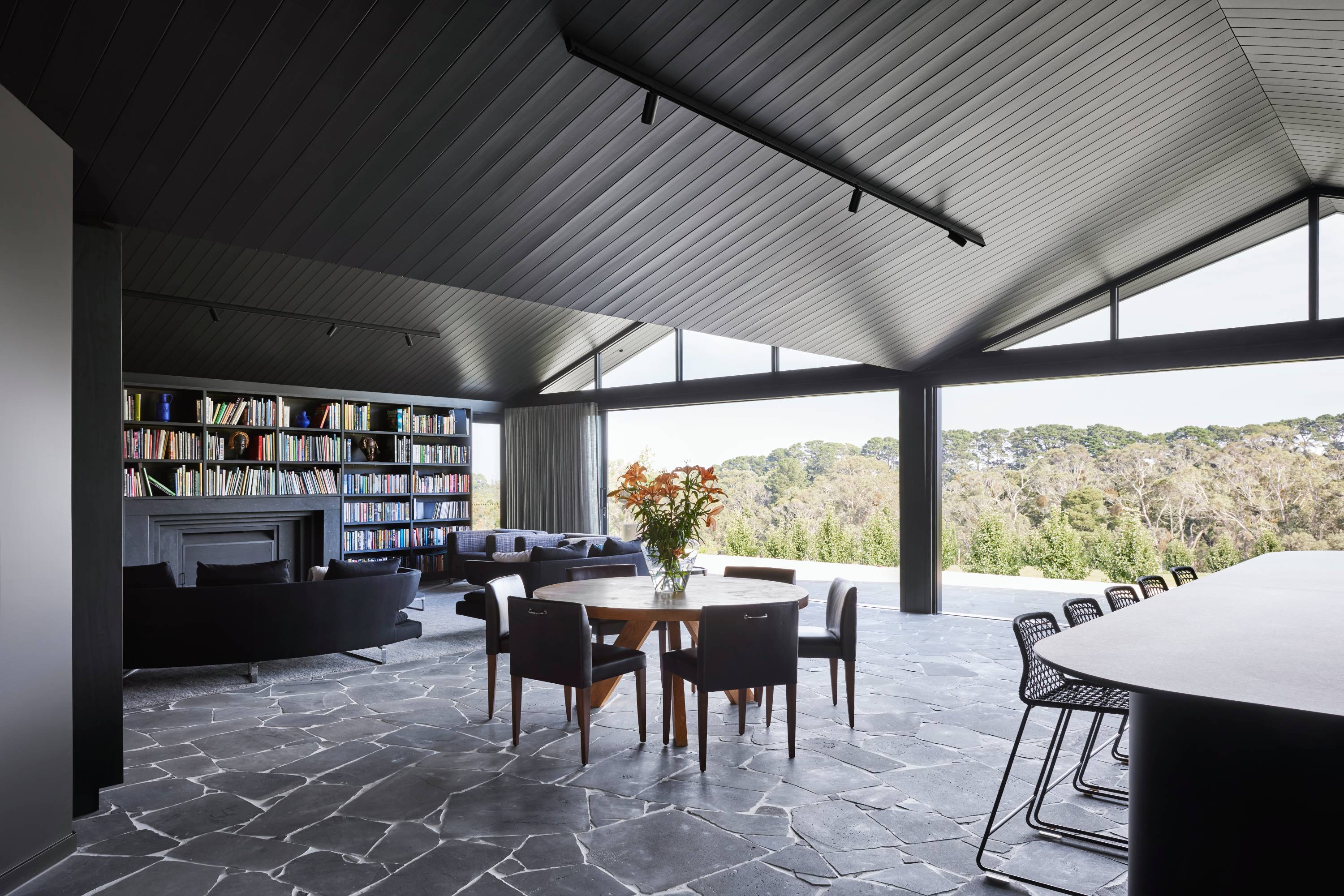
The farmhouse was a linear structure. To bolster the accommodation, Atlas added a new pitched-roof wing, orientated towards the view.
A wall of glass opens up to the landscape, while existing volumes are enhanced by the addition of a series of courtyards that wrap around the house, framed in black steel beams.

The internal layout was completely overhauled, with a new entrance that looks through the addition to the hills to the west.
Receive our daily digest of inspiration, escapism and design stories from around the world direct to your inbox.
The main spine of accommodation runs the full length of the house, including three bedrooms, a rumpus room, a laundry, a pantry, a workshop and an open-plan lounge.
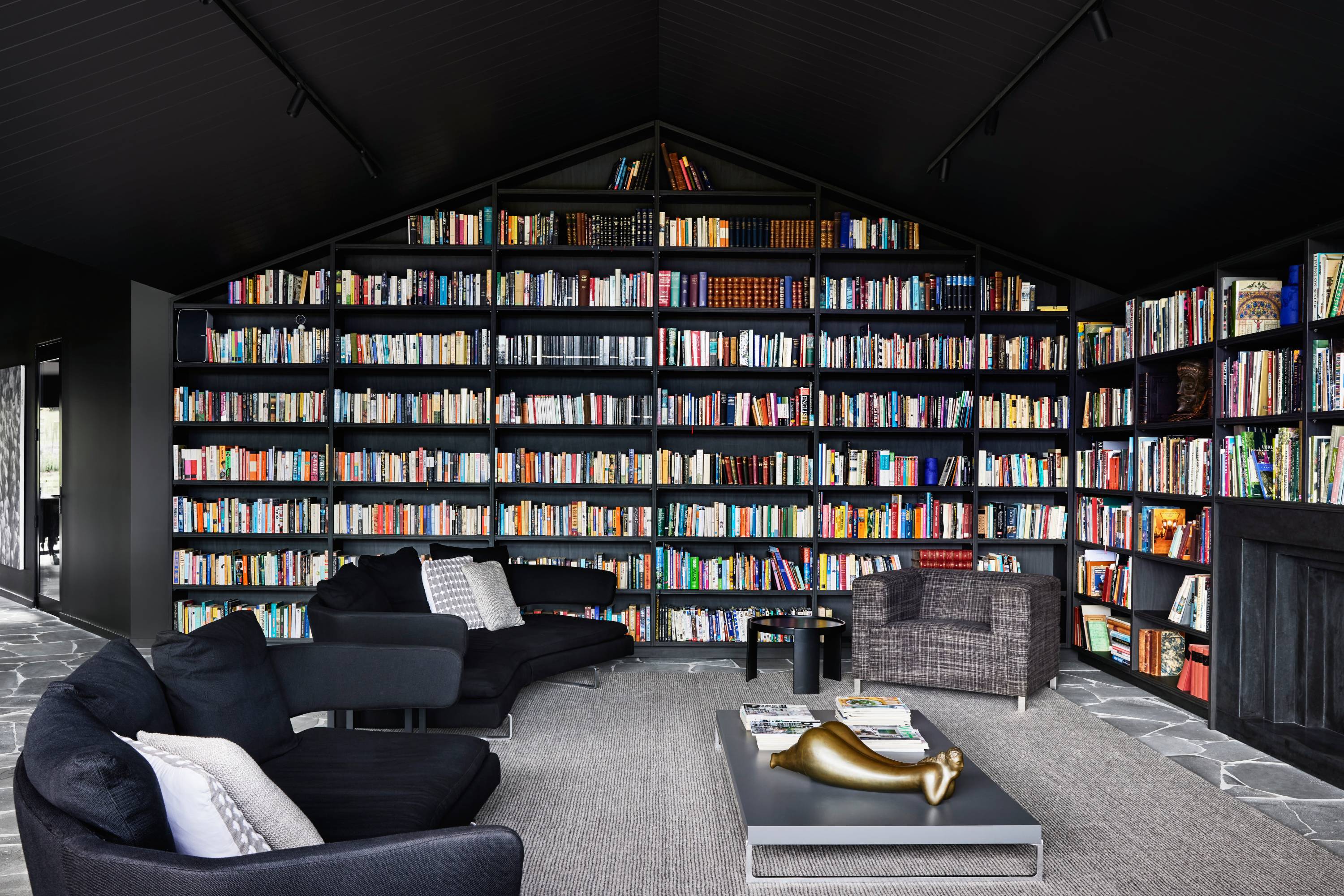
The main living space is contained within the newly added volume, with large sliding glass doors and ceilings that rise up into the pitch of the roof.
This open-plan kitchen, dining and living area can be opened up to an external patio, with two book-lined walls creating a cosy, welcoming atmosphere.
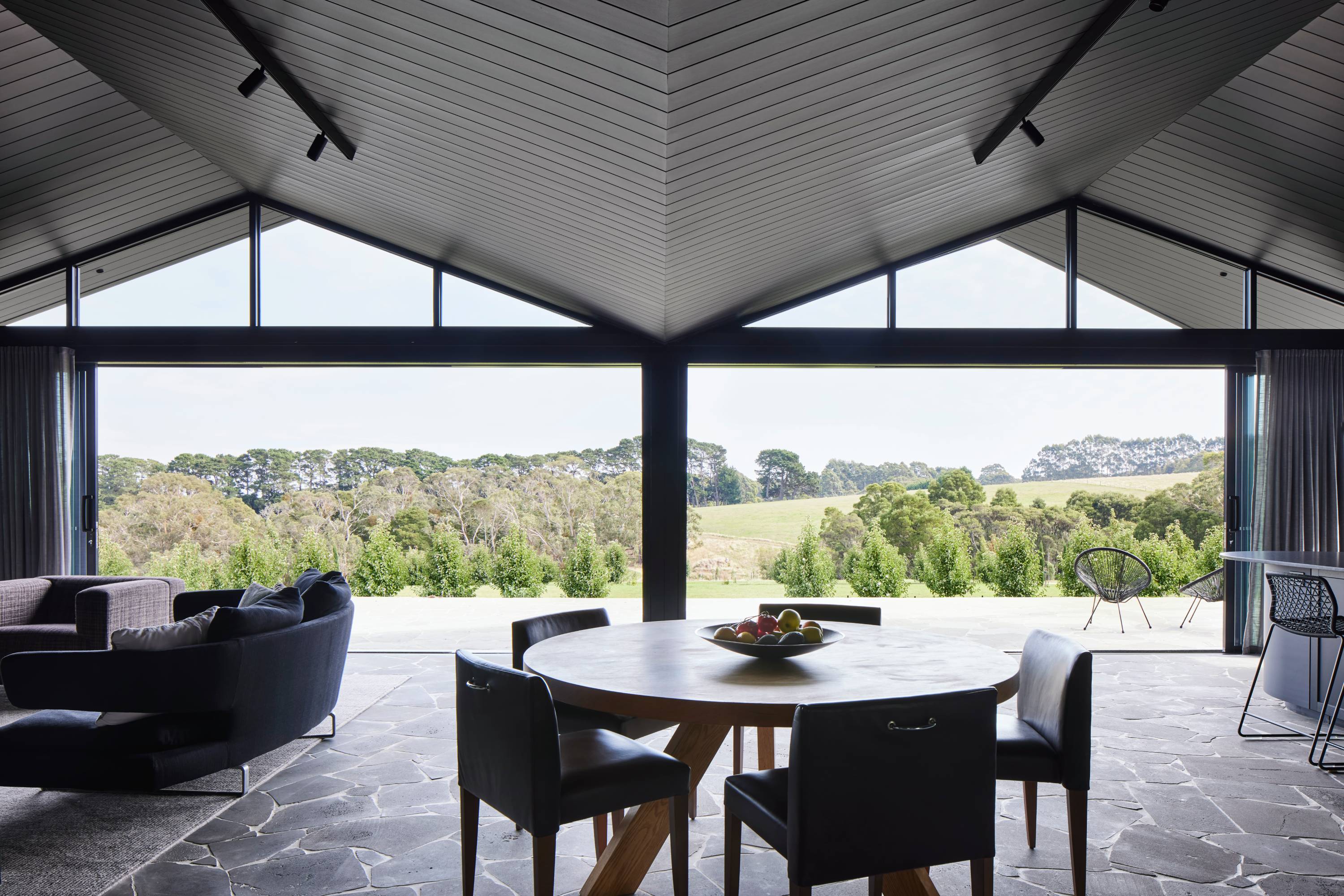
Outside, the courtyards are enclosed within pergolas formed from beams that continue the pattern of the roof pitches and slopes, transforming the structure into a coherent overall form.
A dark palette, inside and out, unites the spaces, as does the bluestone flooring that runs through the living space out onto the terrace.

‘We worked extremely hard to create something that looks effortless,’ the architects say. ‘We hand-picked and tested every tiny element, from materials to colour palettes; every shade of grey, every surface and texture, every last detail was tried and tested.’
The result is a house that immerses its occupants in the landscape, with the greens and blues of the outside world enhanced by the sober interiors. As the house and landscape mature, plants will grow to envelop the framed structure, making it feel more at one with its surroundings.
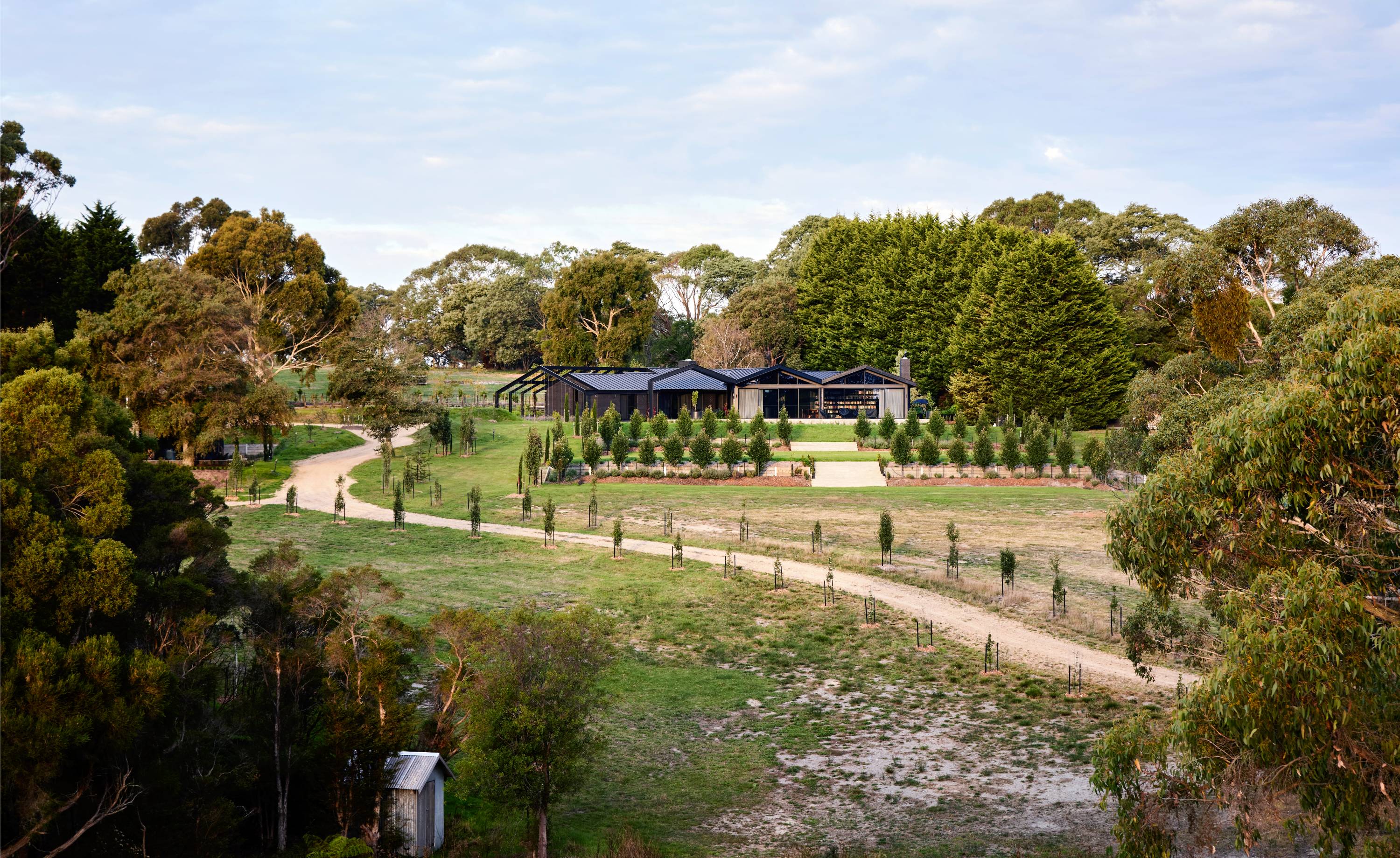
The angled extension shields a south-west-facing courtyard, with a vegetable garden and access to the laundry. The kitchen, with its long, bar-style island unit, is at the centre of the plan, looking both outwards and inwards.
The house was finished on time and was able to form a spectacular backdrop for the wedding, meaning that everything went perfectly to plan.
INFORMATION
Jonathan Bell has written for Wallpaper* magazine since 1999, covering everything from architecture and transport design to books, tech and graphic design. He is now the magazine’s Transport and Technology Editor. Jonathan has written and edited 15 books, including Concept Car Design, 21st Century House, and The New Modern House. He is also the host of Wallpaper’s first podcast.
-
 Sculptor Woody De Othello paints a Miami museum red for a show that ‘almost hugs you’
Sculptor Woody De Othello paints a Miami museum red for a show that ‘almost hugs you’The Miami-born, California-based artist opens his first museum exhibition in his hometown as an experiential journey through life and lifeless objects
-
 Alpine A390 GT: French, fast and fun. A sporting EV with a real sense of occasion
Alpine A390 GT: French, fast and fun. A sporting EV with a real sense of occasionAlpine doubles down on its fast electric credentials with the A390 GT, the French performance brand’s largest car to date
-
 Forget smart homes, Doma's 'intelligent' doors open at the sight of a familiar face
Forget smart homes, Doma's 'intelligent' doors open at the sight of a familiar faceYves Béhar and Jason Johnson have founded Doma, a tech start-up dedicated to seamlessly integrating tech into your daily life
-
 The Architecture Edit: Wallpaper’s houses of the month
The Architecture Edit: Wallpaper’s houses of the monthFrom wineries-turned-music studios to fire-resistant holiday homes, these are the properties that have most impressed the Wallpaper* editors this month
-
 An Australian holiday home is designed as a bushfire-proof sanctuary
An Australian holiday home is designed as a bushfire-proof sanctuary‘Amongst the Eucalypts’ by Jason Gibney Design Workshop (JGDW) rethinks life – and architecture – in fire-prone landscapes, creating a minimalist holiday home that’s meant to last
-
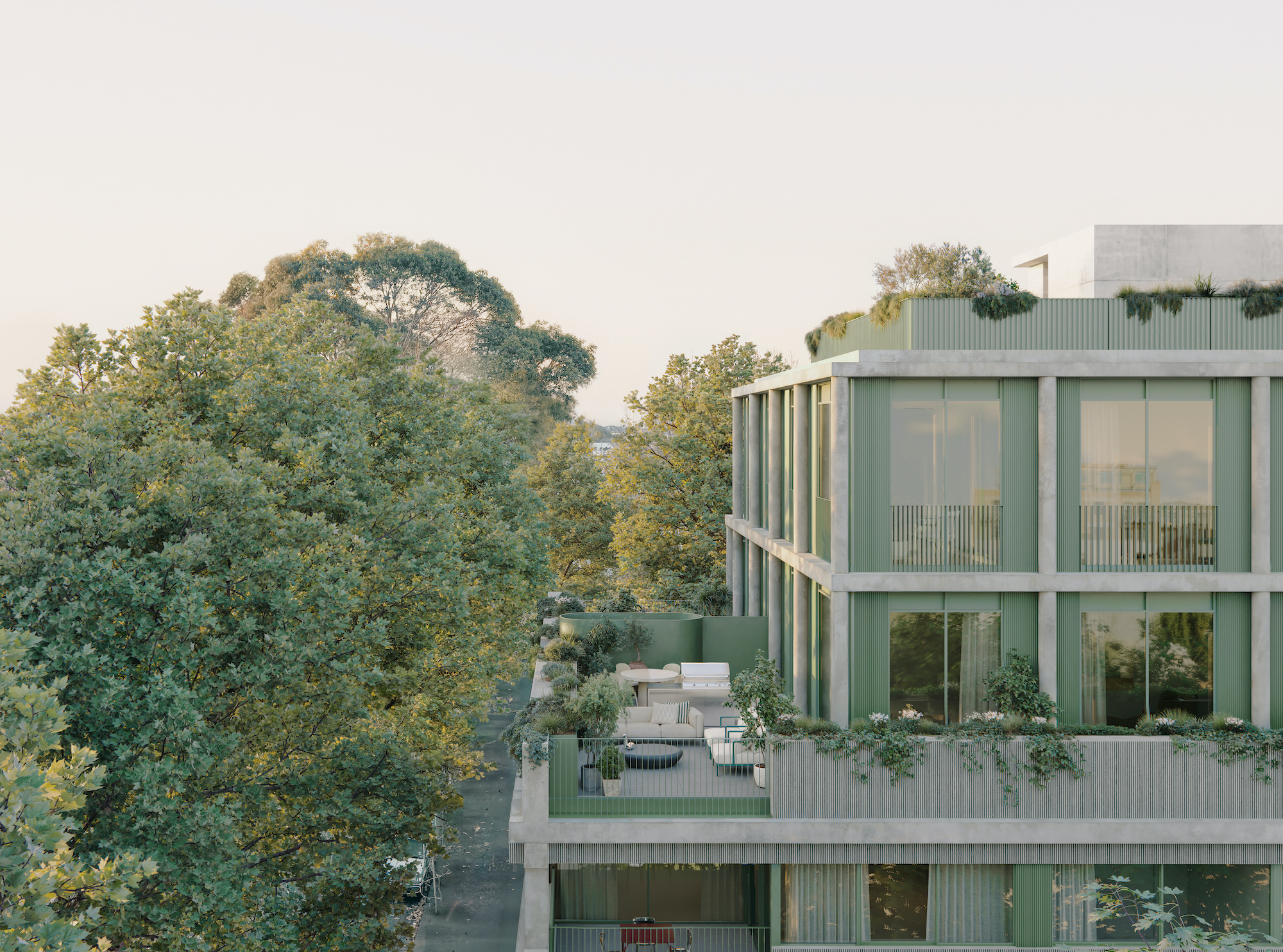 Neometro is the Australian developer creating homes its founders ‘would be happy living in’
Neometro is the Australian developer creating homes its founders ‘would be happy living in’The company has spent 40 years challenging industry norms, building design-focused apartment buildings and townhouses; a new book shares its stories and lessons learned
-
 The Melbourne studio rewilding cities through digital-driven landscape design
The Melbourne studio rewilding cities through digital-driven landscape design‘There's a lack of control that we welcome as designers,’ say Melbourne-based landscape architects Emergent Studios
-
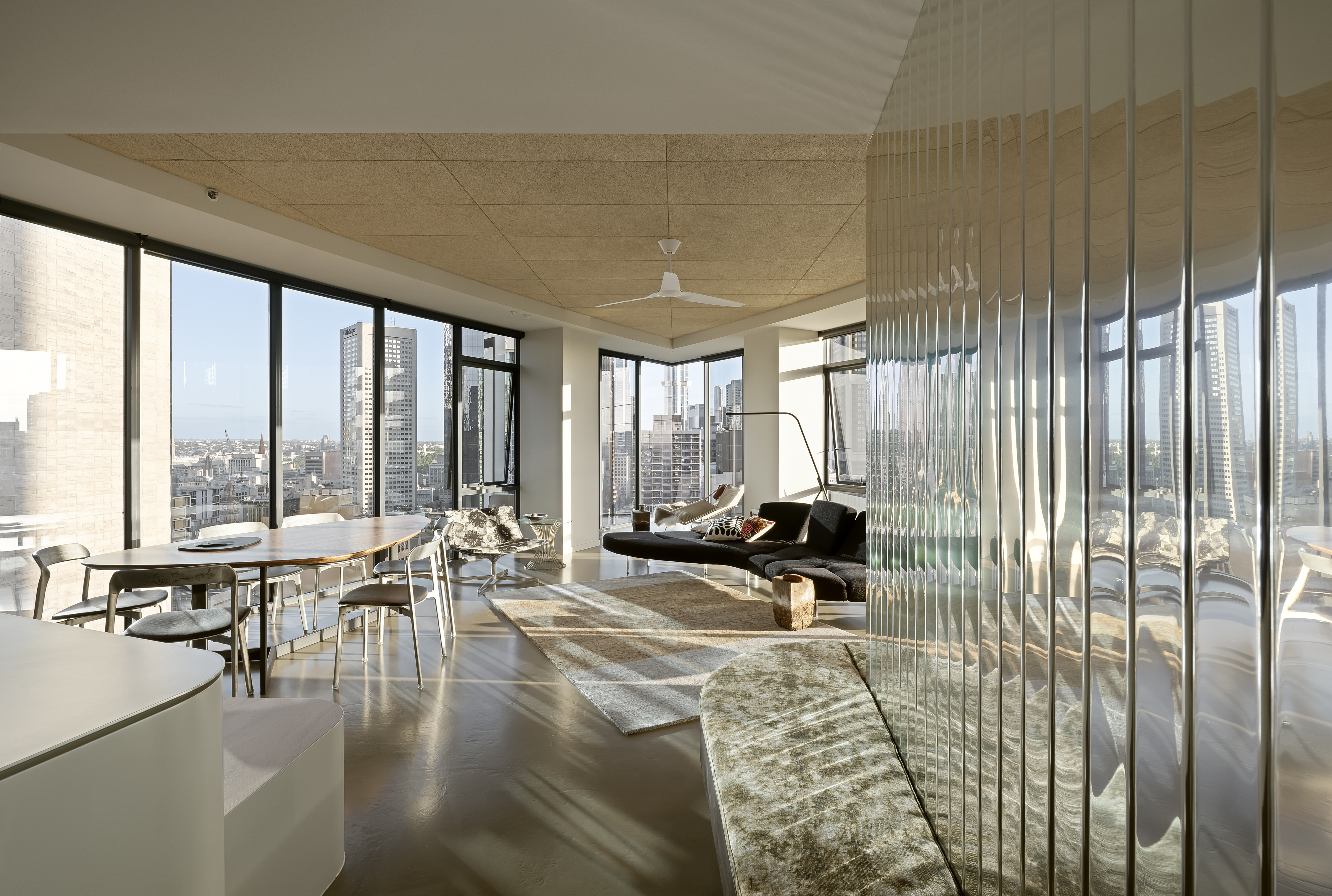 A Republic Tower apartment refresh breathes new life to a Melbourne classic
A Republic Tower apartment refresh breathes new life to a Melbourne classicLocal studio Multiplicity's refresh signals a new turn for an iconic Melbourne landmark
-
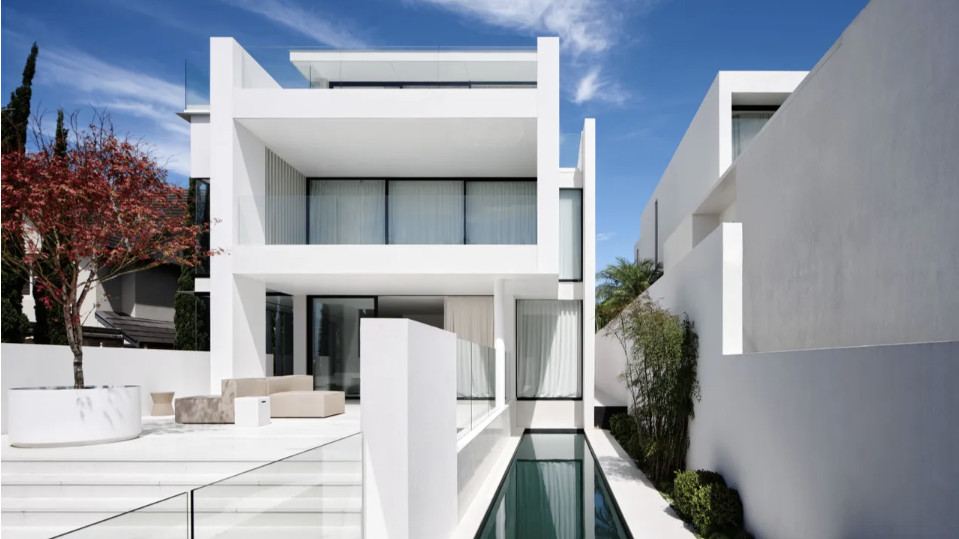 A Japanese maple adds quaint charm to a crisp, white house in Sydney
A Japanese maple adds quaint charm to a crisp, white house in SydneyBellevue Hill, a white house by Mathieson Architects, is a calm retreat layered with minimalism and sophistication
-
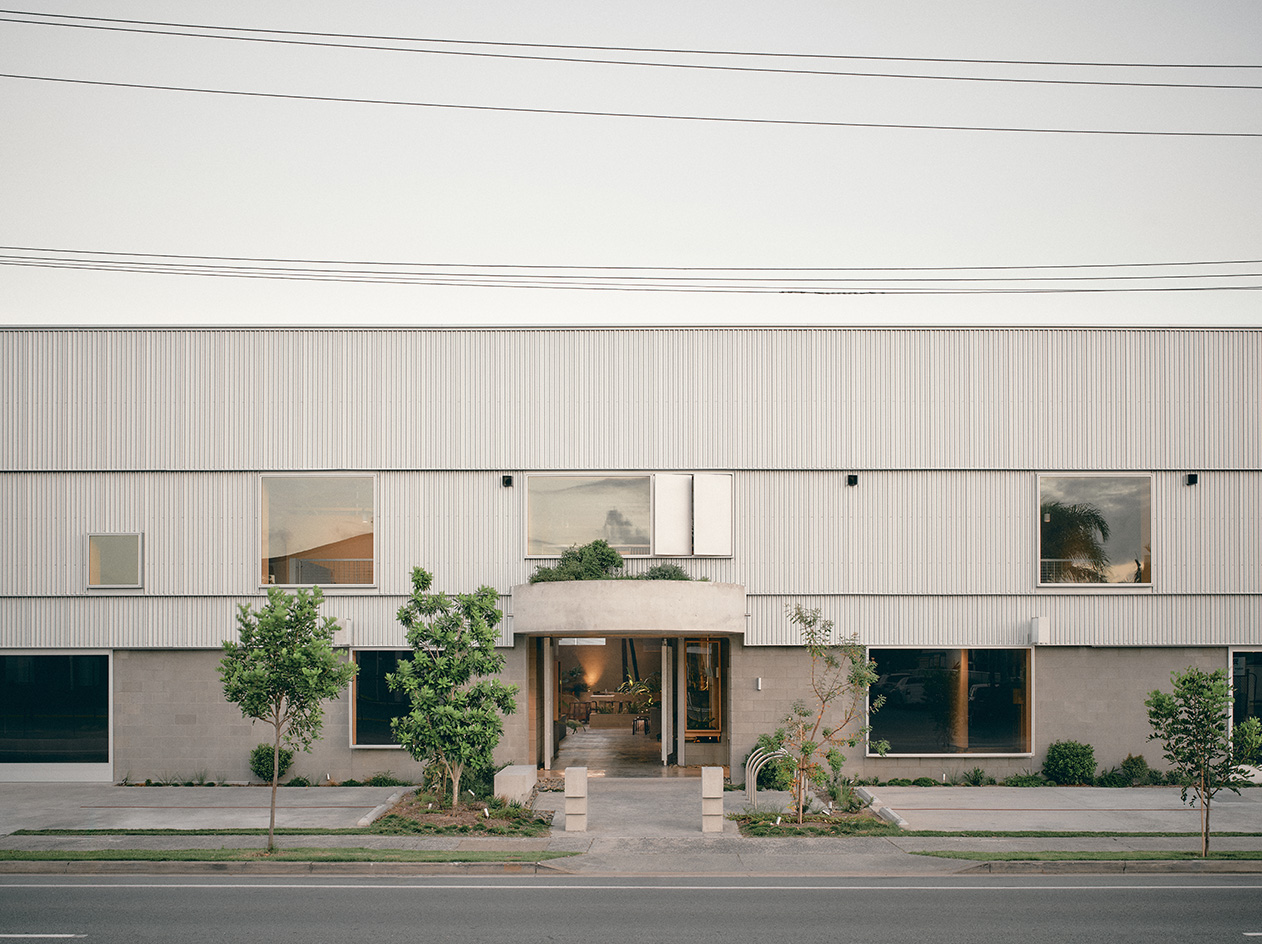 A redesigned warehouse complex taps into nostalgia in Queensland
A redesigned warehouse complex taps into nostalgia in QueenslandA warehouse in Queensland has been transformed from neglected industrial sheds to a vibrant community hub by architect Jared Webb, drawing on the typology's nostalgic feel
-
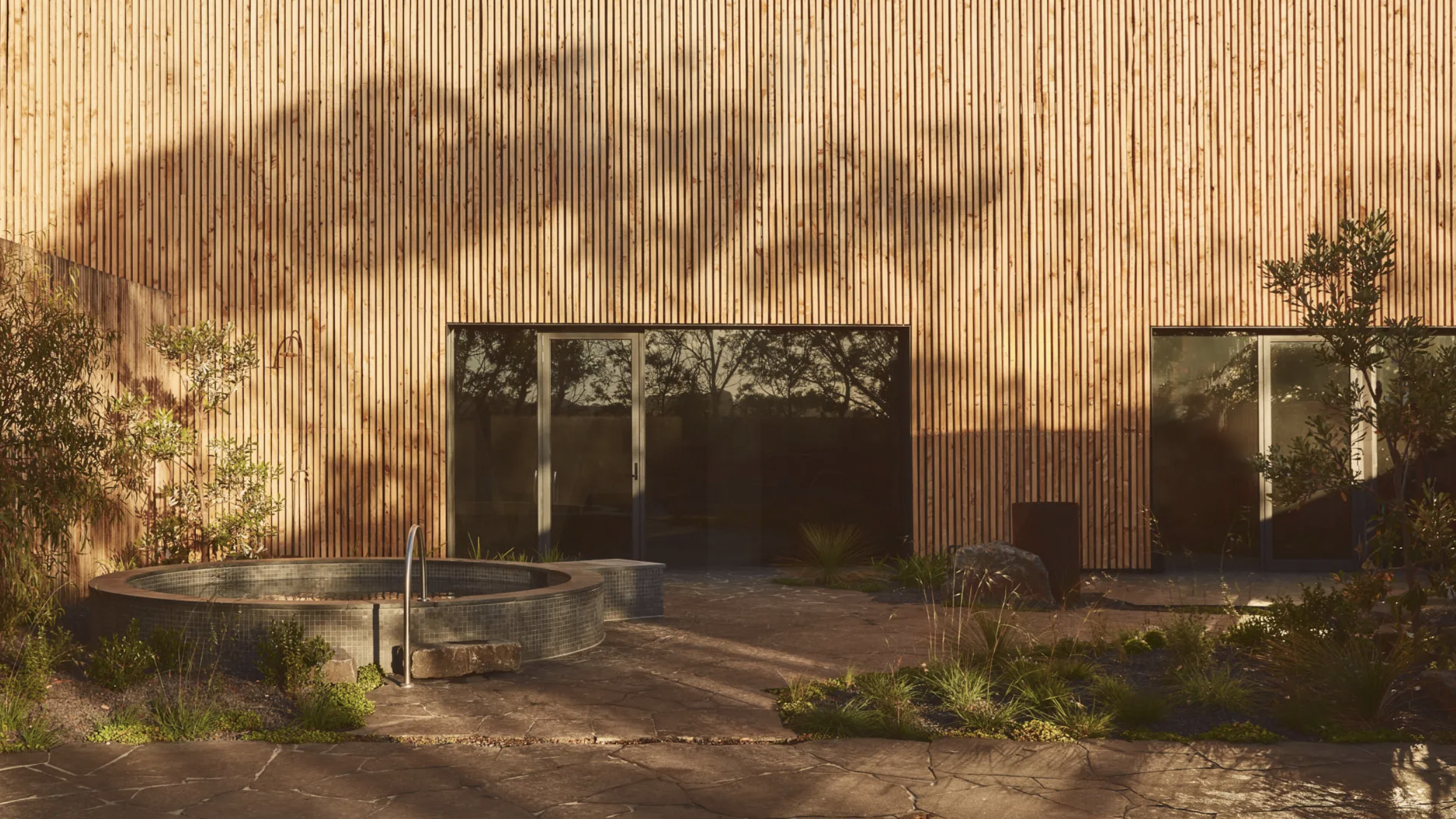 Australian bathhouse ‘About Time’ bridges softness and brutalism
Australian bathhouse ‘About Time’ bridges softness and brutalism‘About Time’, an Australian bathhouse designed by Goss Studio, balances brutalist architecture and the softness of natural patina in a Japanese-inspired wellness hub